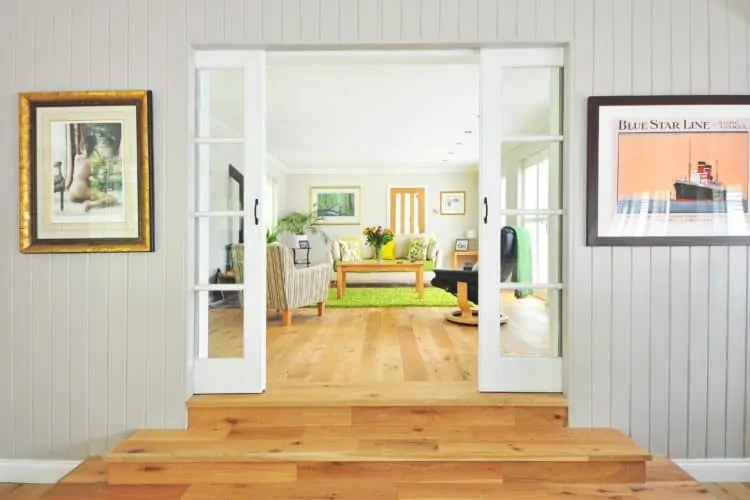
Dos and Don’ts of Bonus Room Additions
Deciding to move forward with a bonus room addition in your house is a major decision for any homeowner. There are many factors to consider, especially with a sizeable addition (at a significant cost). Ultimately your bonus room addition can become a wonderful space for you to enjoy with your family, and also a significant investment for your home. Here are some of the top “dos and don’ts” for planning a bonus room addition and coming up with bonus room ideas.
Why Get a Home Addition?
Before we dig into the dos and don’ts, it may be helpful to first consider why you would want a home addition.
Home additions create opportunities that aren’t available in your current space. Maybe you are increasing the size of your family, but don’t want to go through the hassle of moving to a larger home. Maybe you want to invest in your home by adding value through an addition to increase resale value for potential buyers. Or maybe you want to install a type of room that currently doesn’t exist in your home, like a playroom, an office, or a “man cave,” and you just can’t do it with your current space.
Dos of Planning a Home Addition
So you’ve decided to move forward with planning a home addition – congratulations! Here are some of the top “dos” to include on your list.
DO Work With Your Existing Space
One of the things that will help you tremendously early on in the planning of your home addition is making the decision to lean into and work with the space and structure you already have.
There are two types of additions you can do – you can either build out or up. Meaning, you can In other words, does it add to the footprint of the home, or is it an addition that you build on top of an existing area of your house? It’s important to carefully these options, and determine which style may work best in your home.
For example, do you have a sizeable garage you can build a bonus room on top of? Is there another area of your house that would lend itself well to a second-story addition? Do you have a big enough yard that building out into it won’t lead to a significant loss of space? Is there a first-floor room that would work well with a build-out addition?
By working with rather than against your home’s existing structure and opportunity, you will save yourself not only unnecessary costs, but also headache and stress down the road.
DO Start With “Need”
Another great way to start when planning a home addition is beginning with what is actually needed. Besides “more space” in the home, what really is the purpose of your addition? Is it a sunroom or living room addition for the purpose of relaxing or entertaining? Is it another bedroom for guests? Is it a new office for your growing home business?
Based off the actual need of the addition – the primary reason you are choosing to build it – you will be able to construct a better plan for execution.
DO Research Styles and Options
The great thing about remodeling a home in today’s world is that there are seemingly limitless design and aesthetic options for you to choose from. With platforms like Pinterest, Houzz and even our own gallery, you have lots of sources of inspiration to start with. Make the planning process easier on yourself by doing significant visual research to identify things you like and don’t like in other additions that you see. This will make it all that much easier when you move onto working with a designer to complete your vision.
DO Hire an Architect
If you want to build a sizable addition for your home, investing in working with an architect will be well-worth the money. Especially since the design and structure will impact the resale value of your home, should that be your end goal, working with a professional will ensure you get maximum value.
Architects are highly trained in building design, engineering, and ergonomics. At the beginning of a remodeling project, they will examine your house, listen to your dreams and needs, likes and dislikes, and then provide solutions and approximate building costs.
Architects can also help work up floor plans or detailed blueprints, and even help you select a contractor. And what exactly is the difference between a contractor and an architect? The best way to explain it is that contractors typically look for an efficient and logical solution, but not necessarily the most innovative or aesthetically pleasing approach. So, if you are looking at a complex or unique design, an architect will definitely be necessary.
DO Shop Around for Contractors
If you wanted to buy a new car, you certainly wouldn’t purchase the first and only car you test drove – you would test drive lots of different cards and then choose from them based on price, deal terms, and any other number of factors.
The same goes with deciding on a contractor. Your architect/designer can refer you to their favorite contractors, or you can use search tools like Yelp or Google to find highly-rated contractors in your area. Either way, once you get a few names, reach out to them with your plans and get bids or quote from all of them. This will help ensure you make the most cost efficient labor decision for your remodel.
DO Price Out Multiple Material Options
Another important factor for staying within budget is the materials you select. Whether you’re looking at flooring, paint, drywall, insulation, windows, or practically anything else, you’ll be happy to know that there are near endless options for you to choose from.
Furthermore, designers and manufacturers today do an excellent job of creating affordable materials for a variety of budgets, many of which mimic higher end products very well. For example, you can install vinyl flooring instead of true wood flooring for almost the exact same aesthetic, but at a fraction of the price!
For this reason, it is incredibly important that when you’re selecting materials for your bonus room addition, you choose a couple of options for each design need. That way, if you need to cut costs to stay within budget down the road, you have some solid backup options that you like just as much. No need to settle for any last minute suggestions from your contractor!
DO Consider Working With a Professional Home Remodeling Agency
If you are really overwhelmed by the task at hand, you should definitely consider working with a professional home remodeling agency. These professionals can help guide you through the whole process, from planning to design to execution. Check out our suite of remodeling services.
Don’ts
For every “do” that comes with planning your bonus room addition, there are also a handful of don’ts. Make sure you don’t make these mistakes when working on your addition.
DON’T Skip Your Research
Research is a key step in any home remodeling process. Especially if you are planning an addition for resale value and investment reasons, you will definitely want to consult with local agents and get a gauge on the actual value an addition can hold for your home. Planning wisely in the research phase will help you add more value than you spend.
DON’T Ignore Building Codes or Restrictions
Are there lot restrictions for the property? Will the city need to provide variance approval or any type of permit or zoning change? This can add time, cost and hassle to the process, which could have been avoided with careful planning, so make sure you do your research up front to plan for them early on.
DON’T Assume Your Addition is a DIY Project
Even if you love the idea of executing a DIY project in your home, you may want to think twice before taking this approach with your bonus room addition. While you may be able to execute individual components, such as floor installation or wall-painting, at the DIY level, don’t shy away from getting professional help. Your bonus room addition is too big of a project, but literally and figuratively, to go at it by yourself. And with the variety of help available today, you certainly don’t have to.
DON’T Skip Working with a Designer
A contractor is pretty much a given for a major home renovation project, but don’t overlook the importance of working with a designer or architect as well. Contractors specialize in building, but architects specialize in designing. Going straight to a contractor means you are skipping the crucial design stage, and putting a humongous burden on your contractor. By using an architect, you’ll end up with a home that’s right for you and that you’ll love living in.
DON’T Forget the Details
Details can make or break a bonus room addition, so make sure you dive into the details. So, when planning, consider not only the purpose of the room, but also what types of furniture will be utilized. For example, will you need enough room for a sofa or sectional? Will there be desks or tables to account for? By envisioning these specifics, it’s much easier to determine when a planned space isn’t large enough, or is just right for its intentions. Figuring this out before work actually begins is crucial.
How to Add a Bonus Room
While there are many steps and phases to adding a bonus room to your home, they can be boiled down to five steps.
1. Plan
Planning is a pivotal phase of adding a bonus room to your home. During the planning phase is when you seek out design inspiration, decide what you like and don’t like, and take a serious look at your home to determine where an addition not only would look good, but also make sense, function-wise.
Another key aspect of the planning phase is setting a budget. Doing this very early in the process will help prevent squabbles and frustration later on. Plus, it will give you a more realistic sense of how much your bonus room will actually cost. Don’t forget to add some padding — around $10,000, depending on the size of your addition — to your expected budget.
2. Partner
As we mentioned earlier, choosing the right partners for building your home addition is crucial. From the designer/architect to the contractor team, you need to select partners who you trust to understand your vision and get the job done well and efficiently.
3. Build
The “build” phase is when the work actually gets done on your addition. Based on the size and scope of your contract, this can take anywhere from one to six months. Remember, quality work takes time, and the finished product will ultimately be one that will enrich your quality of life, and the value of your home.
4. Finalize
Once the addition is built, then comes the fun part – truly making it your own! Some of this will happen in the build phase, such as choosing the flooring and wall finishes, but the decorating and furnishings are what will make your bonus room addition unique yours. Details are where magic is made!
Bonus Room Design Tips
The great thing about bonus rooms is that they provide an opportunity to create design that may be the same, similar or entirely different than the rest of your home. And don’t underestimate the power of online resources, magazines, and social media to inspire your bonus room design. Just one photo can give you the spark you need to build a room around. Check out this bonus room design idea gallery from HGTV to get started.










